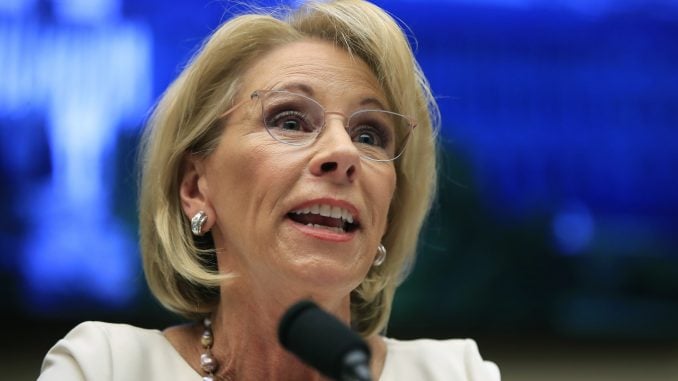
WASHINGTON, D.C. — In response to the COVID-19 outbreak, U.S. Secretary of Education Betsy DeVos announced on April 23 that over $13.2 billion in emergency relief funds are now available to state and local education agencies to use for continued learning purposes in K-12.
The Elementary and Secondary School Education Relief Fund is to be used for immediate needs to conduct distance or remote education. The ESSER funds can also be used for student health and safety, and for the development and implementation of education logistics and plans for the 2020-21 school year.
The funding comes from the Coronavirus Aid, Relief, and Economic Security Act.
North Carolina’s allotment of the funds is over $396 million. The minimum local education agency distribution represents the bulk of the total amount at $356,680,446. State education agencies in North Carolina may reserve a maximum of over $39.6 million and a maximum for administration uses of over $1.9 million.
ESSER Fund allocations to the states were determined by the fiscal year 2019 State shares of Title I, Part A allocations without the application of the hold harmless provisions in ESEA section 1122.
“This national emergency continues to shine a light on the need for all schools to be more agile,” said DeVos in a press release. “Now is the time to truly rethink education and to get creative about how we meet each student’s unique needs.”
Education leaders will have the flexibility to use funds from the Elementary and Secondary School Education Relief Fund for immediate needs, such as tools and resources for distance education, ensuring student health and safety, and developing and implementing plans for the next school year.
“The funding made available today has very few bureaucratic strings attached and empowers local education leaders to do just that,” Devos said. “I encourage them to focus on investing in the technology, distance learning resources, training and long-term planning that will help education continue for both teachers and students, no matter where learning takes place.”
The U.S. Department of Education maintains updates and information for school leaders, students and parents at: ed.gov/coronavirus


